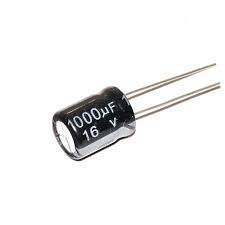The Uno R3 is an ATmega328P microcontroller-based development board. This is widely popular in Embedded electronics because of the available resources and easy to use by everybody features. With 14 digital input/output pins where 6 can be configured and used as PWM outputs, 6 as analog inputs is a great addition for I/O related operations. Powered with a 16 MHz ceramic resonator, an USB connection, a power jack, an ICSP header, and a reset button.
It includes a LED that can be useful in multiple applications or to test the board functionality. A voltage regulator, better to say an LDO, is available inside this development board to make this Arduino compatible for a wide range of input voltages. The application is very easy, just upload the code, and run.
Key features include:
– Removable ATmega328P microcontroller for easy upgrades
– Standard Arduino UNO form factor for compatibility with shields and accessories
– USB interface for simple programming and connectivity
– Wide support across Arduino IDE and third-party platformsThe UNO is the most used and documented board of the whole Arduino family.
Specifications
- Condition: New
- Model Number: UNO REV3
- Application: Computer
- Operating Temperature: -5-40℃
- Supply Voltage: 7-12 V
- is_customized: Yes
- Microcontroller: ATmega328P IC
- Operating Voltage: 5 V
- Input Voltage: 7-12 V
- PWN Digital/O Pins: 6
- Analog Input Pins: 6
- DC Current per I/O Pin: 20 mA
- DC Current For 3.3V Pin: 50 mA
- SRAM: 2 KB
- EEPROM: 1 KB
- Clock Speed: 16 Mhz
Getting started
Arduino UNO board is a fantastic way to dive into electronics and programming. If you’re ready to begin, here’s a quick guide to help you launch your first project:
Steps to Get Started with Arduino UNO:
- Get the Hardware
- Arduino UNO board (with removable IC if available)
- USB cable to connect the board to your computer
- Sensors, LEDs, and other basic components like resistors and breadboards
- Install the Arduino IDE
Download the Arduino IDE and install it on your computer to program your board. - Set Up Your Arduino
- Plug in your Arduino UNO via USB.
- Open the Arduino IDE, and under the “Tools” menu, select “Arduino UNO” as your board.
- Choose the correct port from “Tools > Port.”
- Write Your First Code (Blink an LED)
Here’s a simple LED blink example:void setup() {
pinMode(13, OUTPUT); // Set digital pin 13 as an output
}void loop() {
digitalWrite(13, HIGH); // Turn the LED on
delay(1000); // Wait for a second
digitalWrite(13, LOW); // Turn the LED off
delay(1000); // Wait for a second
}Upload this to your board and watch the onboard LED blink!
Package includes:
1xArduino Uno R3
1xUSB Cable





















